Canadian Nikkei Series
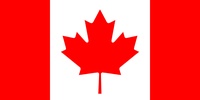
The inspiration for this new Canadian Nikkei interview series is the observance that the gulf between the pre-WW2 Japanese Canadian community and the Shin Ijusha one (post-WW2) has grown tremendously.
Being “Nikkei” no longer means that one is only of Japanese descent anymore. It is far more likely that Nikkei today are of mixed cultural heritage with names like O’Mara or Hope, can’t speak Japanese and have varying degrees of knowledge about Japan.
It is therefore the aim of this series to pose ideas, challenge some and to engage with other like-minded Discover Nikkei followers in a meaningful discussion that will help us to better understand ourselves.
Canadian Nikkei will introduce you to many Nikkei who I have had the good fortune to come into contact with over the past 20 years here and in Japan.
Having a common identity is what united the Issei, the first Japanese to arrive in Canada, more than 100 years ago. Even in 2014, it is the remnants of that noble community that is what still binds our community today.
Ultimately, it is the goal of this series to begin a larger online conversation that will help to inform the larger global community about who we are in 2014 and where we might be heading to in the future.
Stories from this series
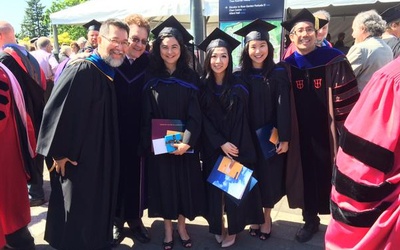
Yonsei Carolyn Nakagawa and UBC’s Asian Canadian and Asian Migration Studies program - Part 1
Sept. 16, 2015 • Norm Masaji Ibuki
When it comes to learning about ourselves as Canadian Nikkei there aren’t many places of higher learning (including our high schools) where one can study about JC history and engage in discussions about identity, etc. While the curious in major centres where there are JC cultural centres do enjoy some advantages, the vast majority of others will largely need to rely on the internet to inform themselves. What has mostly informed my own ethnic identity has substantially changed over the …
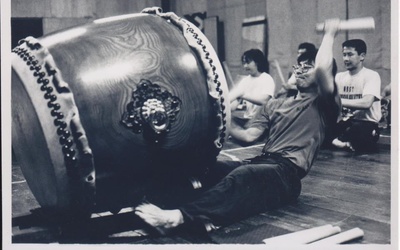
Toronto Taiko Master Kiyoshi Nagata - Part 2
Aug. 6, 2015 • Norm Masaji Ibuki
Read Part 1 >> How did you join the Kodo drummers on Sadogashima? I first saw Kodo perform at Ryerson Polytechnical Institute in Toronto in 1982. I was completely blown away by their perfection, physical stamina, and spiritual presentation. Since I was only 13 at the time, I never even thought joining them would be an option. However, throughout university, I would see them a few more times and meet the acquaintance of some of Kodo’s performers. By the time …
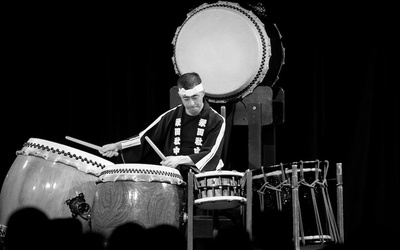
Toronto Taiko Master Kiyoshi Nagata - Part 1
Aug. 5, 2015 • Norm Masaji Ibuki
Gary Kiyoshi Nagata, 46, the leader of Nagata Shachu, one of Canada’s premiere taiko groups, was born and raised in the Richmond Hill area of Toronto. The Sansei grew up at a time when the word “Nikkei” was not widely known, “being Japanese” lacked the cultural currency it has today, and when learning about things Japanese required much more determination. Like Kiyoshi, I grew up in suburban Toronto, but well away from anything Nikkei besides a few other JC families …
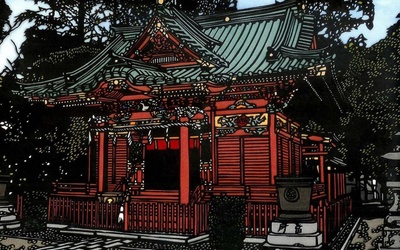
Mark Yungblut Interview: Portrait of a Young Kiri-e Artist - Part 2
July 10, 2015 • Norm Masaji Ibuki
Read Part 1 >> Your art seems to focus on traditional aspects of Japanese culture like temples, shrines, cherry blossoms, etc. Is there a reason for this? I’d like to give you a more in-depth answer than “because I like them,” but that’s essentially it. I really can’t explain why I’m so drawn to this subject matter, maybe I worked on their construction in a past life. I have been to several castles and temples, and the feeling I get …
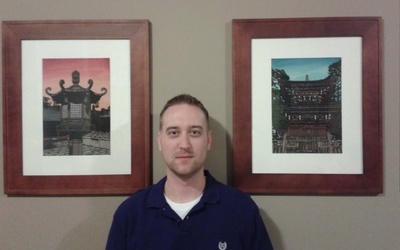
Mark Yungblut Interview: Portrait of a Young Kiri-e Artist - Part 1
July 9, 2015 • Norm Masaji Ibuki
Among the remarkable generation of Canadian Nisei artists, there are names like Roy Kiyooka (1926–1994), Kazuo Nakamura (1926–2002), Nobuo Kubota (1932– ), and Takao Tanabe (1926– ), among many others, who grew up during the internment years and gave expression to their personal experiences. The Japanese Canadian Cultural Centre (JCCC) in Toronto has recently been featuring work by an outstanding new wave of Nikkei artists, some of whom have introduced to Discover Nikkei readers already: Linda Ohama, Emma Nishimura, Kats …

Hamilton Fashion Designer HITOKOO - Part 2
May 28, 2015 • Norm Masaji Ibuki
Read Part 1 >> Can you describe your work as a designer? Are there particular aspects of your design that might identify you as Nikkei? My clothing designs come out of the concepts I explore in my art practise. I use the same representational motifs from my art work in my clothing designs. For example in my “Hive” series I use the image of a honeycomb cell to represent work, labour, and creation of the working class. I make a …


